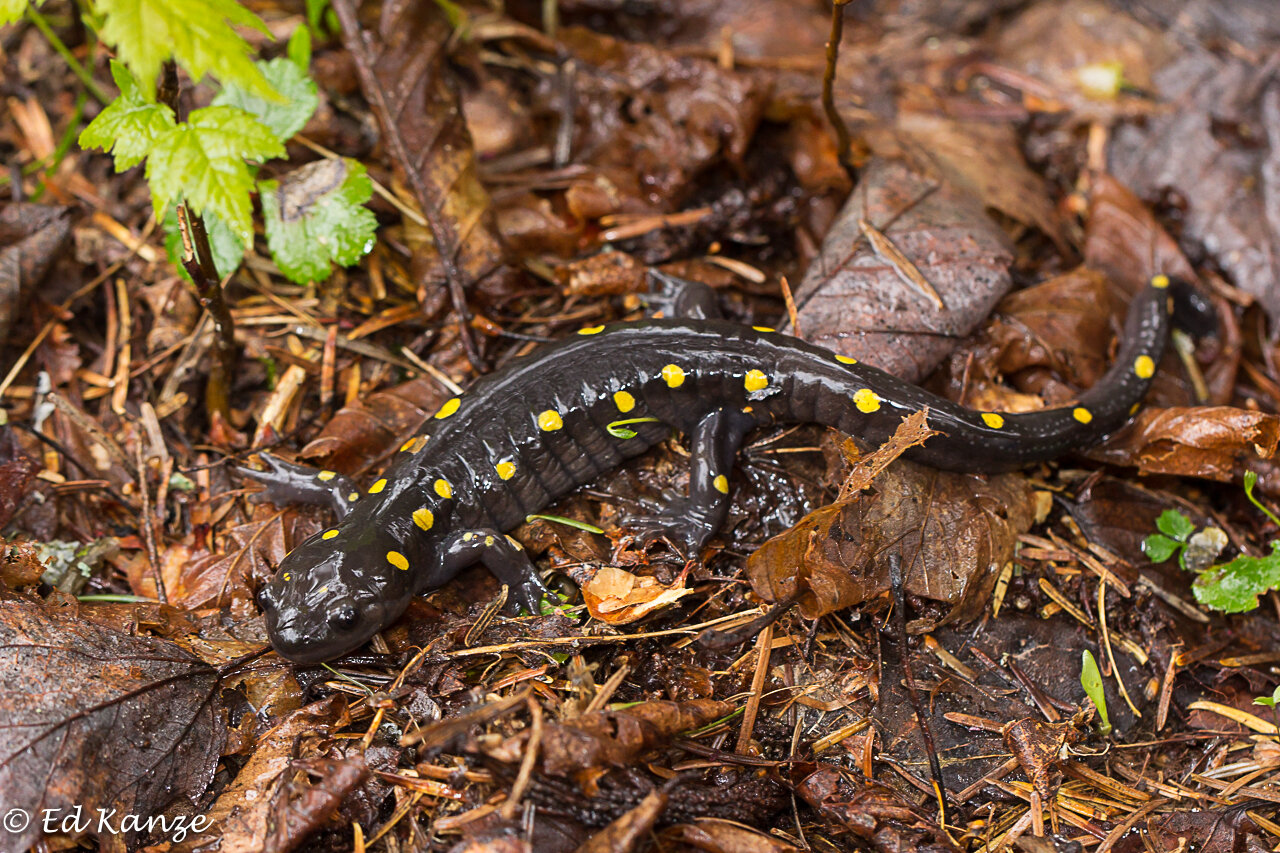Spotted salamanders have the same motivations in life we have. They want to eat, be safe, and make sure the future includes more of their lineage. But instead of courting the way we do, they rise out of the soil after the ground thaws in spring, march to shallow ponds and quiet pools in brooks, and merge gametes. Spotted salamanders practice internal fertilization, but not in the way we tend to think of it. Males plop down little gelatinous pillars on the pond bottom, each topped with a packet of sperm. These curious structures are called spermatophores. When females enter the pond, males swim alongside them and encourage the females to pick up their spermatophores, not those installed by other guys. A persuaded female straddles a spermatophore, picks it up with the lips of her cloaca, and pulls the sperm packet inside.
Generally within two or three days, females lay gelatinous egg masses that might be the size of the average lemon. They usually cling to sticks or to the stems of aquatic plants. The masses may be clear or milky. In time most of them will turn green. Inside the egg masses are eggs. Let’s have a look.
I photographed the egg mass above with a compact underwater camera on April 26. You can see the gelatinous mass with the spherical eggs inside. Inside the eggs are embryos. Next let’s have a look at the same egg mass on April 29. Now we can see the embryos beginning to divide and develop.
Weeks went by before I photographed spotted salamander eggs again. I needed a new spot because the first pond had largely dried up—-one of the hazards of using tiny “vernal pools,” or temporary spring ponds, for nurseries. I did the best I could to rescue the stranded masses and place them in what little water remained. Below, see the eggs I photographed below in a different pond. Notice the jade-green color of the embryos, which are developing at a fast clip. The green comes from an alga that enters not only the egg masses and eggs but also the cells of the developing salamanders. It photosynthesizes and produces oxygen that helps the embryos survive and develop. Amazing!
My most recent photo session with spotted salamander eggs took place on June 12. Friends had told me about seeing an egg mass in a slender and slow-moving brook near their house. I investigated and found not one but five egg masses. The next two photos show what my trusty submersible camera was able to able to see inside the clearest of the masses. Note how the eyes and mouths of the salamander larvae are now developed, and how feathery external gills have sprouted from the sides of each larva’s head.
Once the larva are fully developed, they wriggle out of the goop that surrounds them and spend the summer swimming like fish or tadpoles and feeding as much as they can. Their appetites are formidable. Spotted salamander larva are known to devour their neighbors and siblings. Less than 10% will likely survive to leave the wet spots in late summer or the following spring. The final photo shows a larva that lived to sprout legs and take on adult form. I’m guessing this one is a few years old. With luck, it might live to be twenty or thirty!







